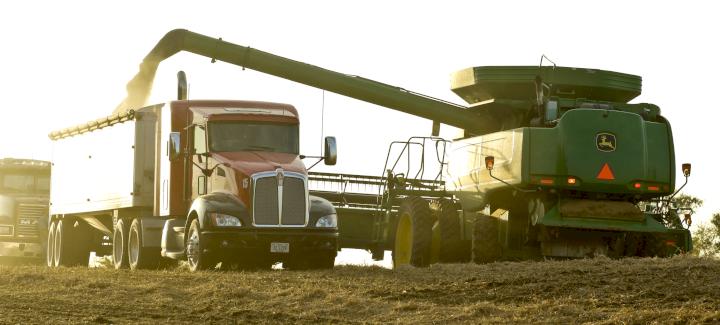Need help selecting seed for 2023? Don’t forget to look at plot data.
November 2022
Deciphering product performance from plot data can be beneficial for growers making educated seed decisions for the next planting season. You’ve likely already heard from several agronomists from different seed companies presenting their latest local and regional plot results. This is all great information to have, but it’s important to understand what you’re looking at and ask the right questions to make a better decision for your operation.
One rule of thumb we tell growers is to always keep this equation top of mind:
Genetics + Management + Environment = Yield
“Genetics are only part of the equation,” says Tony Lenz, Stine corn technical agronomist. “Growers need to look at the big picture, as many factors go into producing top-end yield. They need to consider the environment they’re in and the management strategies they employ and those used in the plot results being presented to them. Growers need to take a comprehensive approach to decipher plot data.”
Ask the right questions
When reviewing plot data with your local seed company and dealers, we recommend asking questions to help you better understand what you’re looking at on paper. A few questions we recommend include the following:
- How was the plot set up? How many products were used for comparison and at what replication?
Essentially, you want to ensure you’re looking at fair results.
“You really want to make sure the plots were done right,” says Bill Kessinger, Stine corn technical agronomist. “What’s the plot length? Are you only seeing data from a good-quality plot? How many rows per product were used for the comparison? What was the row width used? How were the comparisons replicated? Were hybrids of similar stature and height used in the plot or could there be potential for a shading effect? These are all important questions to ask when reviewing plot data." - Was the Least Significant Difference Value (LSD) considered?
LSD is generally reported in plot results and designates the number (typically in bushels/acre) that separates entries without making them significantly different. For example, if Hybrid A made 152 bu/acre and Hybrid B made 141 bu/acre and the LSD of the plot was 13 bu/acre, that data indicates that Hybrid A was not better than Hybrid B, but rather random chance likely accounted for the difference in the two. - What is the product performance history of this plot? Have you done trials in previous years, and what were those results?
As growers, you understand all too well that no year is the same and Mother Nature brings different variables that will impact yield. It’s important to get what history you can of that plot or of similar plots near that location to determine performance in different years.
“You may have stress in one area this year that skews the data, but we need to think bigger picture,” says Lenz. “If you had a drought year that hurt your yields, you can evaluate data for drought tolerance, but you need to look at how that hybrid did in a lot of different environments year over year. There’s a lot of variabilites to look out for, especially in a year like 2022.”
Make sure to ask how specific products of interest perform in good growing years and in years where stressors such as drought or high moisture could have impacted yields. Always ask for several years of data if available. - Is standard deviation (SD) or coefficient variation (CV) data available?
SD and CV are typically provided for strip trial plots and are used to report individual hybrid performance in a given location but in a larger context. SD is a mathematical formula that reports one deviation from the mean in a “normal” distribution or bell curve. CV states the SD as a percentage. These terms are basically the same thing; they show you how far the average of Product A deviated from the mean of the plot. Going back to our earlier example, if Hybrid A yielded 152 bu/acre and the average of the plot was 155 bu/acre with a SD of 6, the data indicates that Hybrid A was within the normal distribution of hybrid yields in that plot, regardless of overall yield numbers.
“In our Stine plots, we ensure all plot performance is reported in percent of plot average,” says Kessinger. “This means that if products of similar maturities demonstrate performance of 100% or higher, they are within the normal distribution of yields in the plots.”
With these questions answered and after thorough review of the results, you should be in a position to make sound production decisions for your operations. For more tips on deciphering plot data, review this article or contact your local Stine sales rep or regional sales agronomist.
Related Articles
-

Use Stine’s XP® seed treatments to prevent early injury to your crops
December 2025 in Agronomy
-

Understanding Stine’s enhanced oil profile soybeans
December 2025 in Agronomy
-

Soil sampling sets the stage for spring
November 2025 in Agronomy
-

Corn production growth paves way for more high-performing Stine® hybrids
November 2025 in Agronomy



